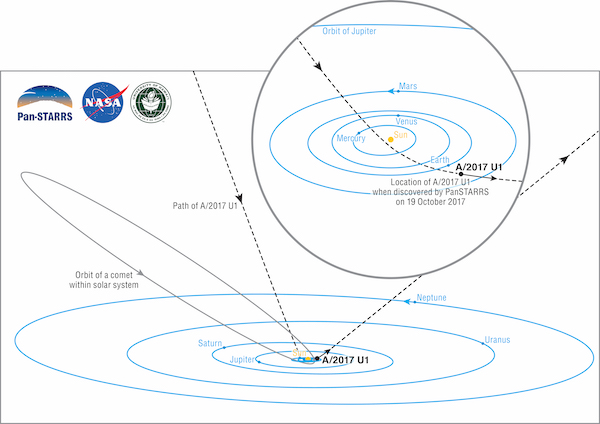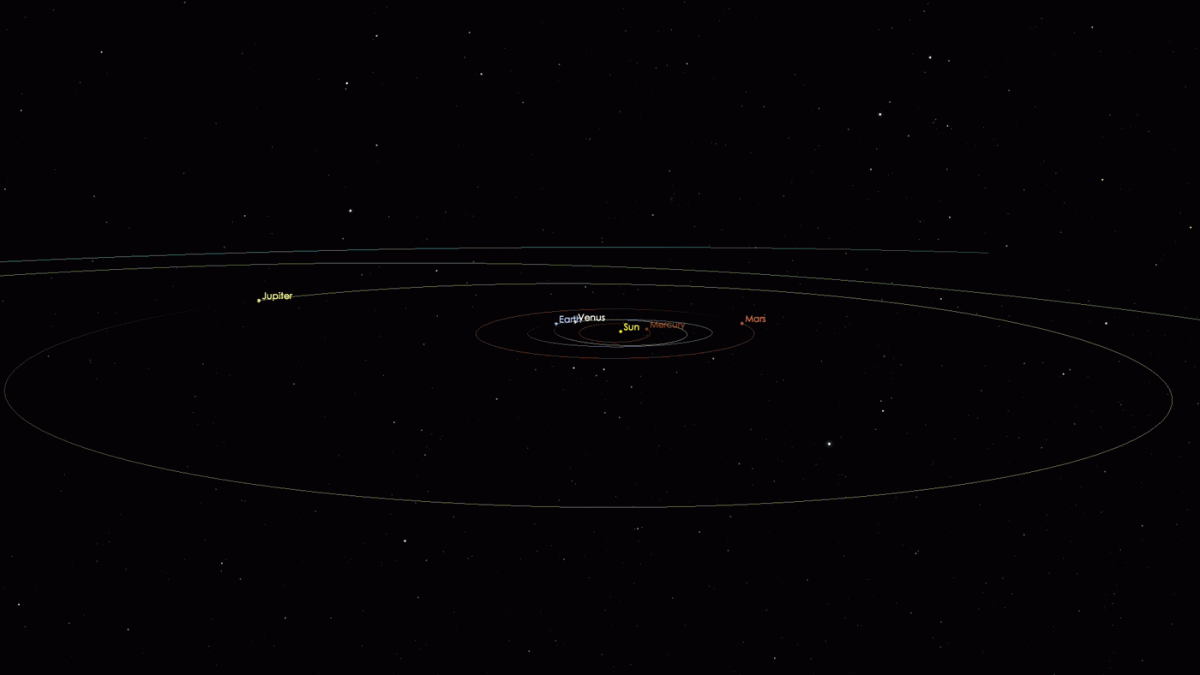Astronomers have spotted an interstellar visitor for the first time.
It’s either a comet or an asteroid, and came speeding right through the heart of our solar system; after a hairpin turn around the sun, it’s now on its way back out of our cosmic backyard. Scientists at the University of Hawaii’s Pan-STARRS 1 telescope at Haleakala first spotted the quarter-mile-wide object on Oct. 19, and knew immediately that it was something different.
“Its motion could not be explained using either a normal solar system asteroid or comet orbit,” says Rob Weryk, a postdoctoral researcher at the University of Hawaii. “This object came from outside our solar system.”
The object, named A/2017 U1 for now, is moving in an orbit much too eccentric to be a comet or asteroid from inside the solar system. It shot into our home system from above, at a far higher angle than any other objects orbiting the sun. It’s going fast, too, around 15.8 miles per second, another clue that it comes from far away. It’s the first time astronomers have managed to confirm an interstellar object in our solar system, although they’ve long suspected that comets and asteroids must be flying free throughout the universe.

The path A/2017 U1 took as it crossed through our solar system. (Credit: Brooks Bays/SOEST Publication Services/UH Institute for Astronomy)
The object dove inside of Mercury’s orbit before being spun around by the Sun’s gravitational pull and whipped outward again. It came closest to the Sun on September 9, and passed about 14 million miles from Earth on October 14. At the moment, its trajectory is taking it toward the constellation of Pegasus.
Before it goes, the astronomers hope to gather some information about its composition. Other solar systems may look a little different than ours, and pinning those differences down would help scientists understand how solar systems form and behave. Normally, they need to observe such systems from far away. Now, for a little bit at least, we’ve got part of another solar system right at hand.
